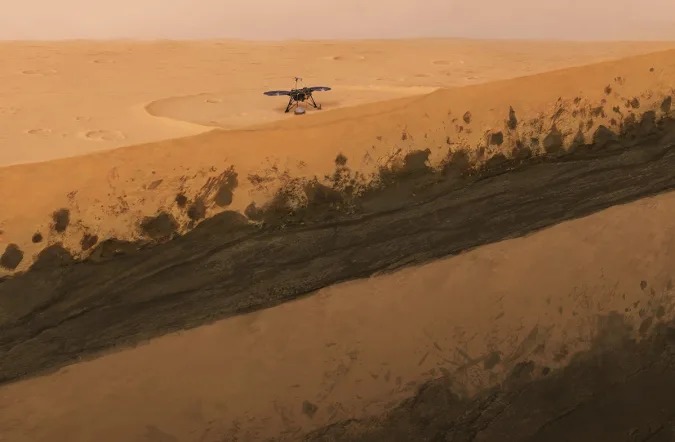
Based on Martian environmental noise data sent by NASA’s InSight, which descended on Mars’ Elysium Plain on November 16th three years ago, the scientist analyzed the state of the first tens of meters from the crust to the mantle and the core. and filmed it.
On Earth, environmental noise comes from activities such as the sea and humans, as well as various sound sources such as wind and land. However, on Mars, where there is almost no atmosphere and no oceans, the sound from the earth itself accounts for most of the environmental noise.
InSight generates environmental noise data on Mars from the seismometer data it carries, and the Swiss Earthquake Agency SED and Swiss Federal Institute of Technology ETH regularly analyze it to find out how Mars is inside. SED has been analyzing environmental noise data to investigate the geological structure of the Earth for several years now, and this method is applied to Mars.
According to the SED, up to 3 m deep from the foot of the site where the Insight fell, there is a layer of sand, and just below it is a thick rock belt that is highly likely to have been wound up and deposited from the surface of Mars by a meteorite impact in the past. In addition, there is a layer of lava that was dried 1.7 billion years ago when Mars cooled and there is an old layer of lava divided by sediment below.
This old layer seems to date back to 3.6 billion years ago, when Earth was still volcanically active, and it is speculated that the solar system’s brothers Earth and Mars followed the same path of growth until then.
Earth and Mars appear to have had large oceans and atmospheric layers. However, after that, for some reason, Mars Bay lost its magnetic field that had a role to protect the atmosphere, and the scorching particle solar wind emitted from the sun gradually peeled off the Martian atmosphere, which had lost its protection. As a result, Earth and Mars are now in contrast in appearance.
The research team says that they have proven that they can interpret the Martian strata using a technique developed on Earth. Applying technology to know the interior of the Earth may deepen our understanding of Mars. Related information can be found here.


















Add comment